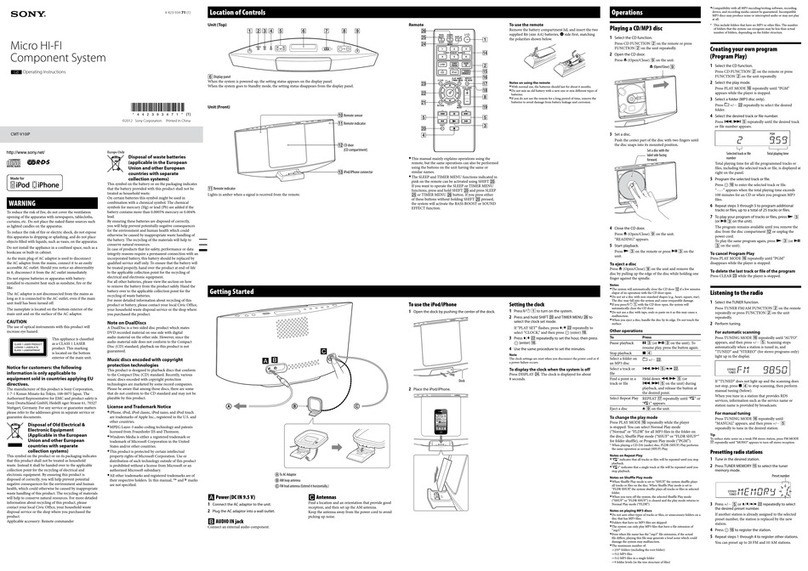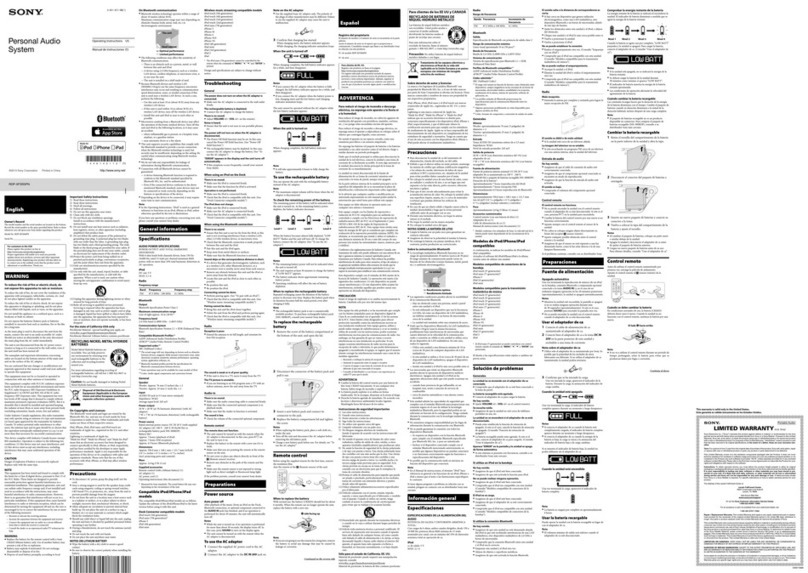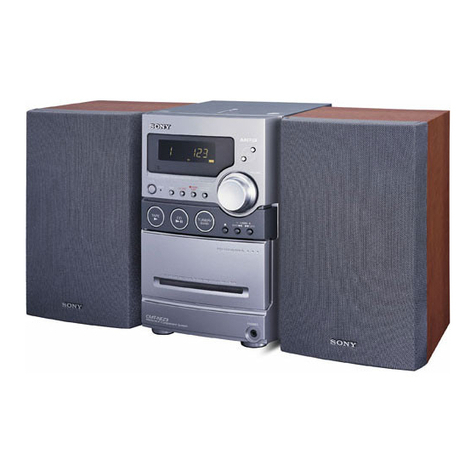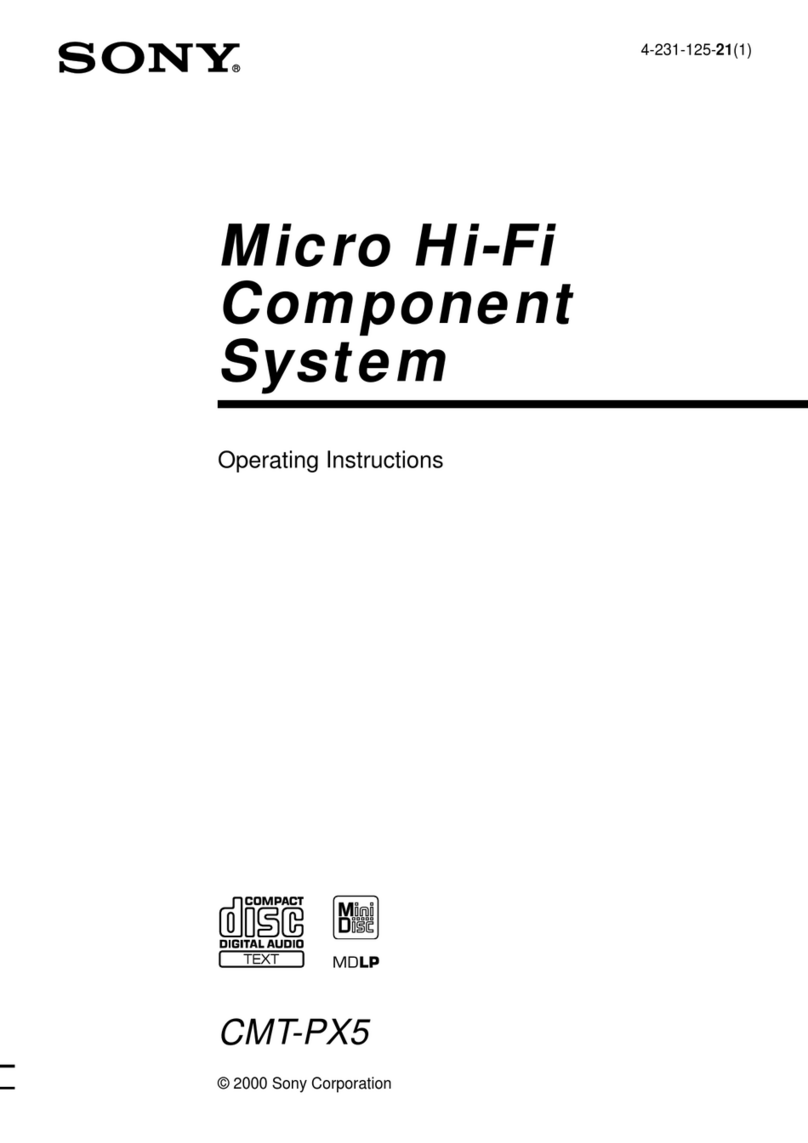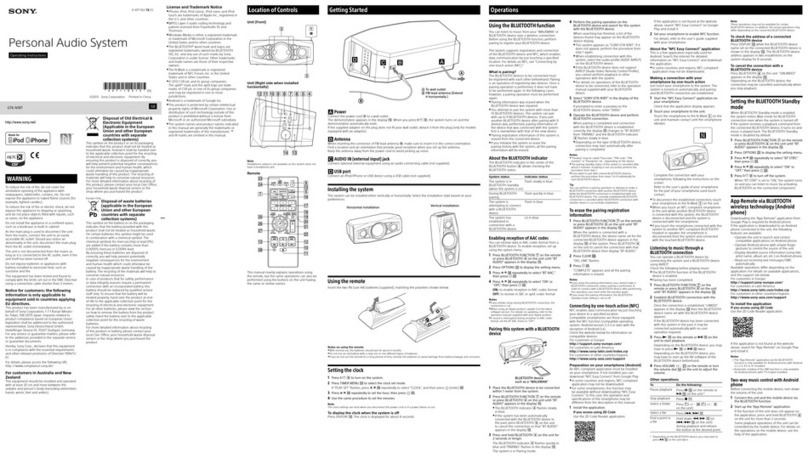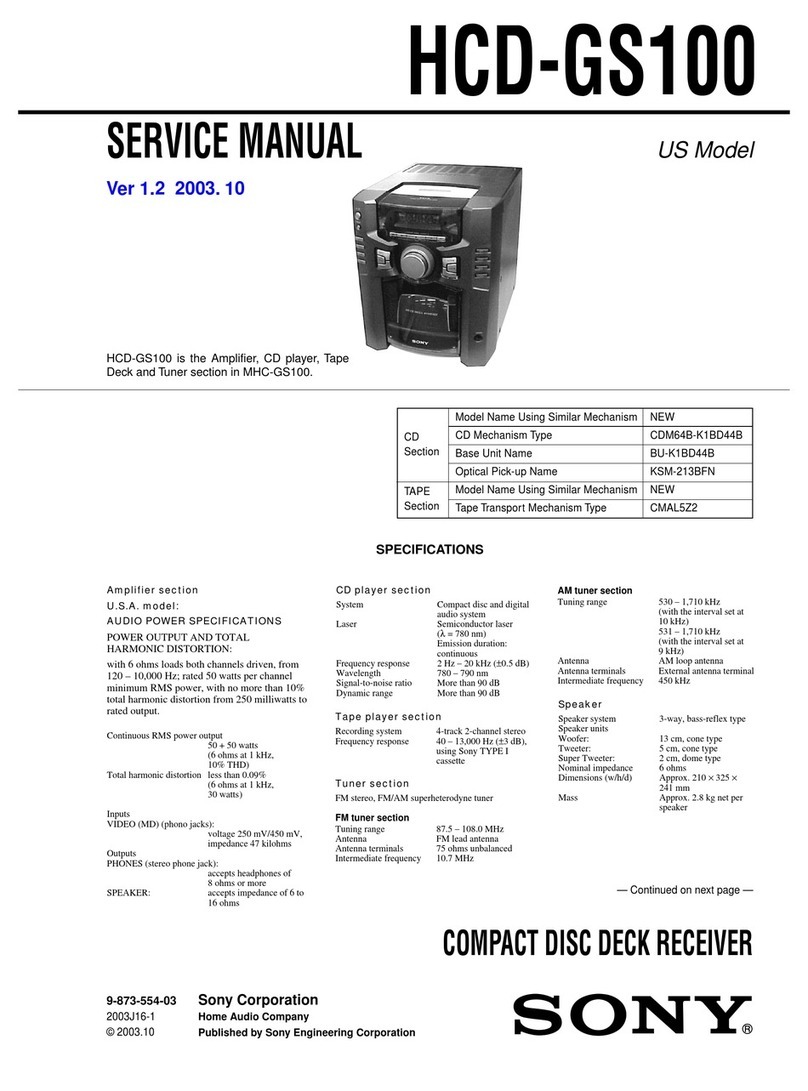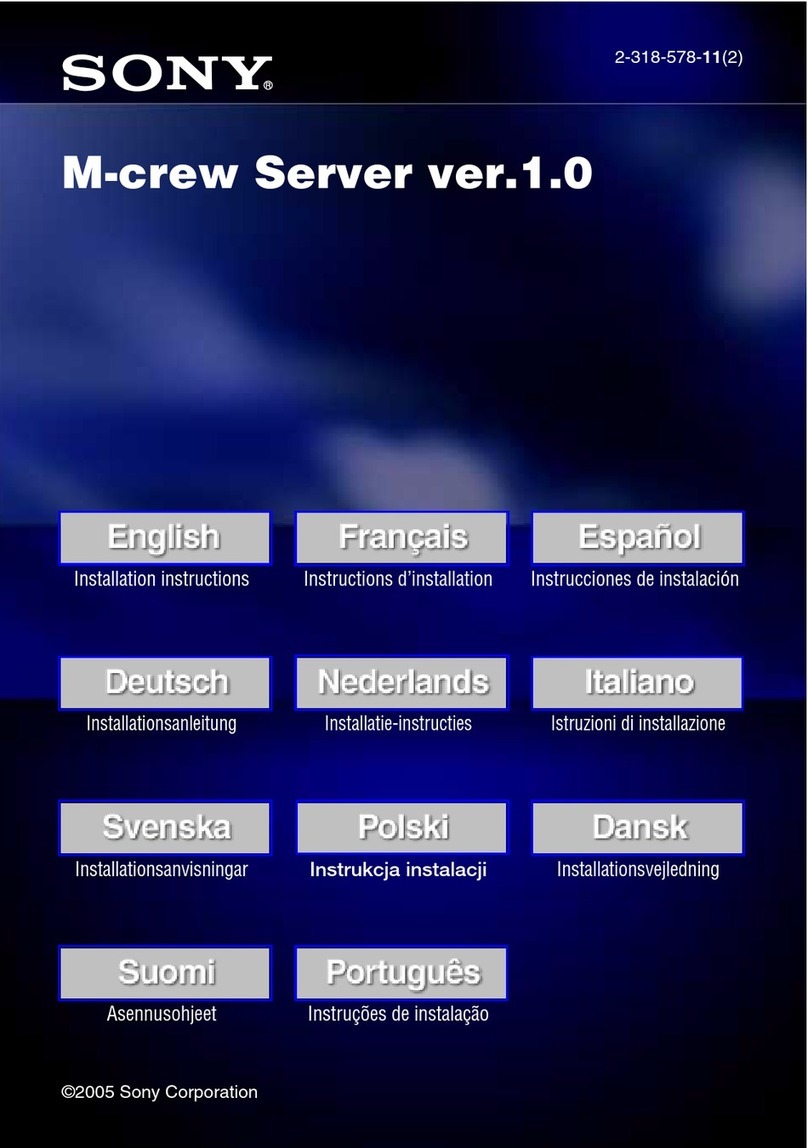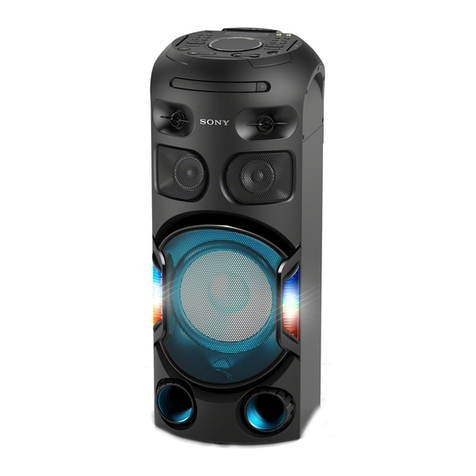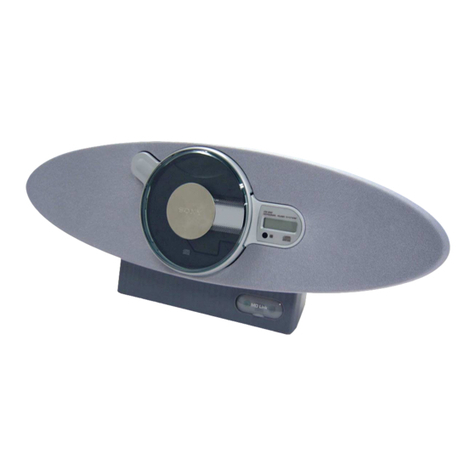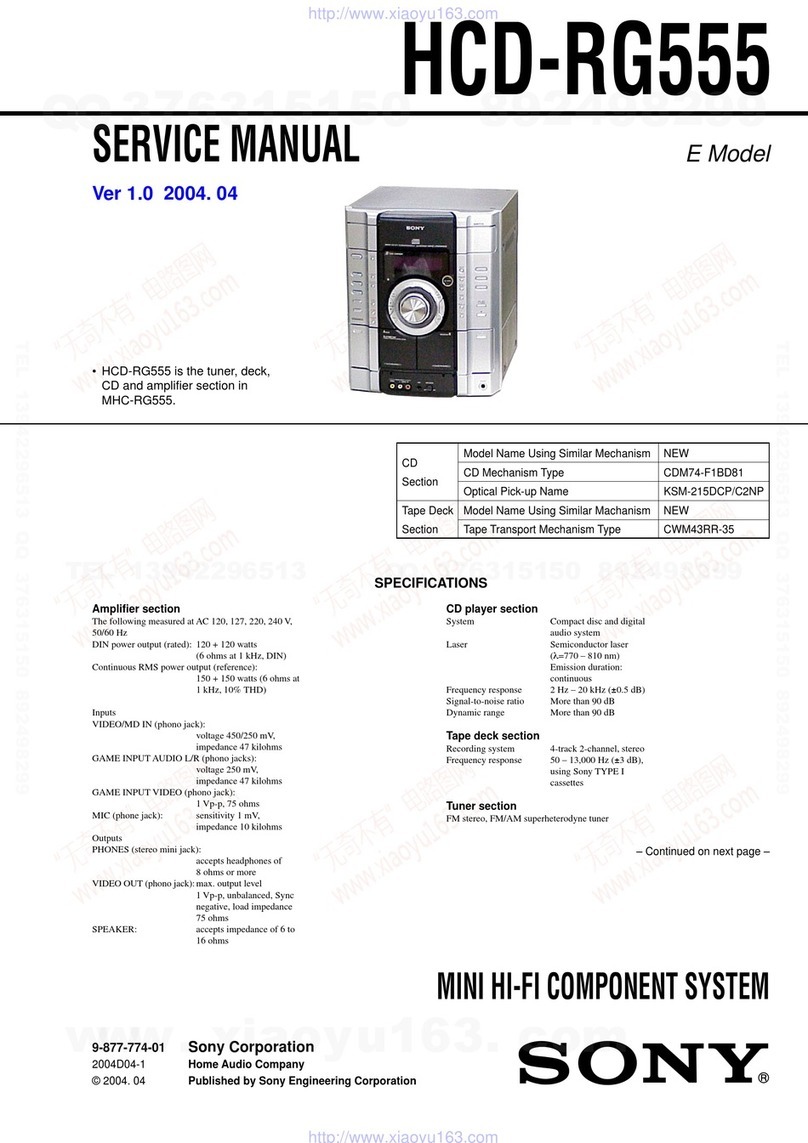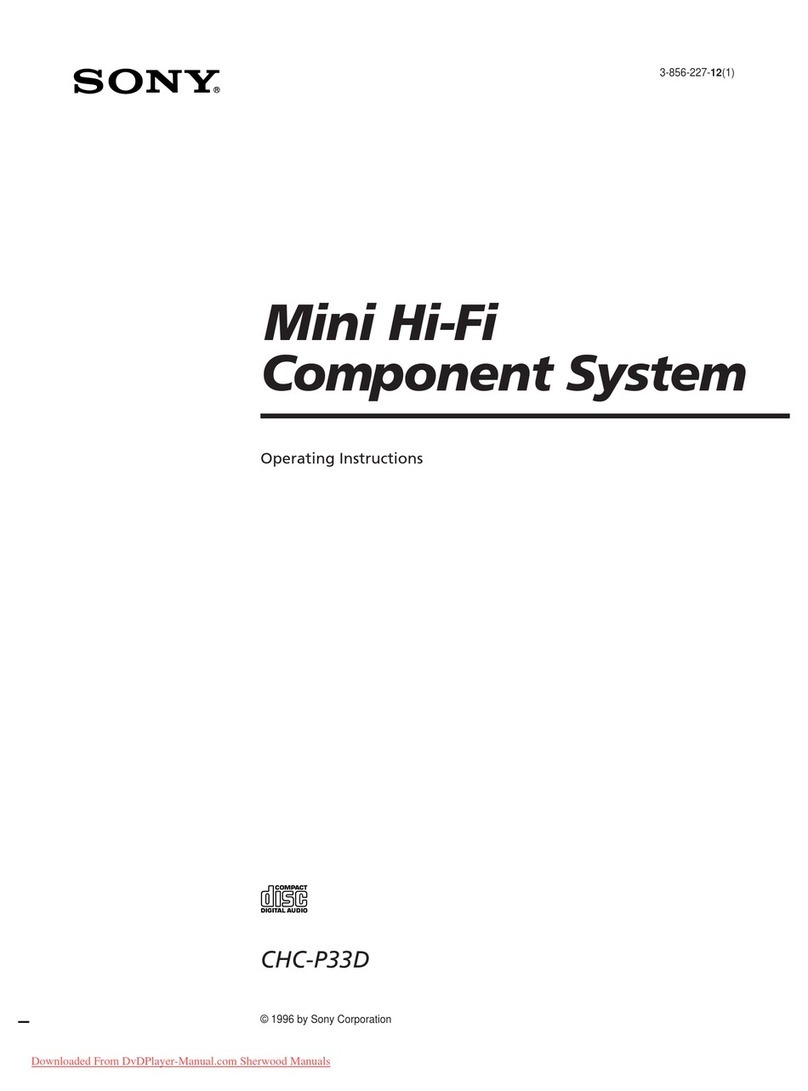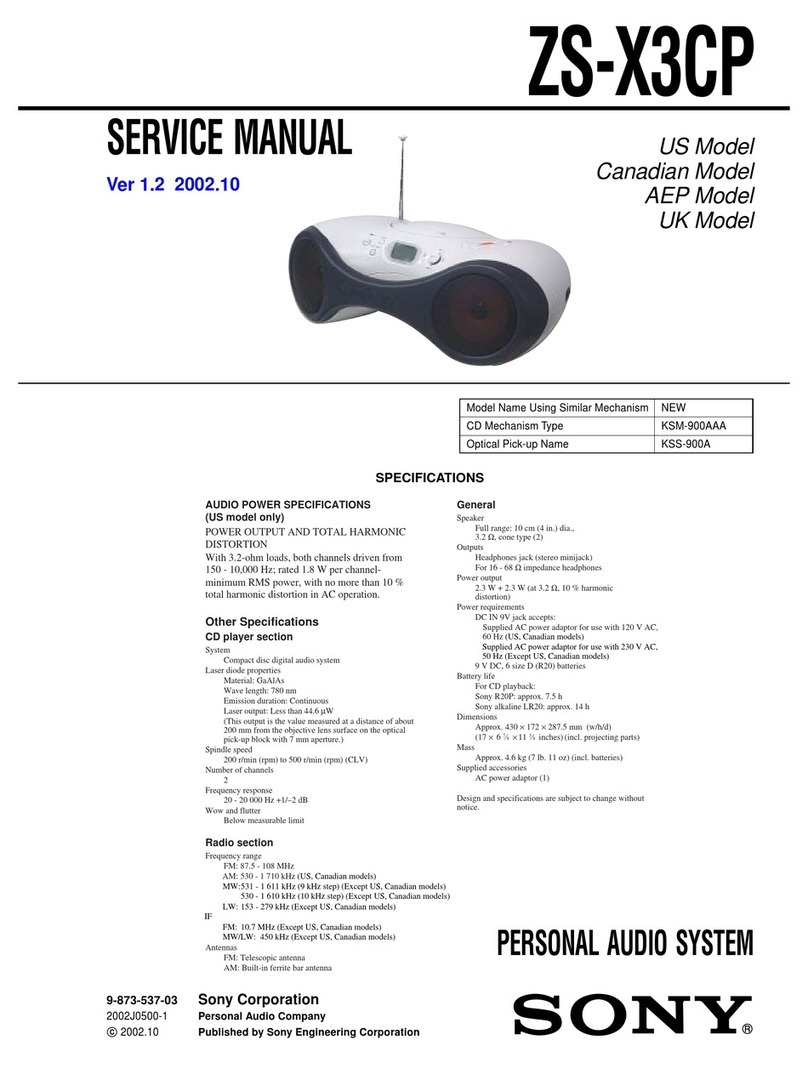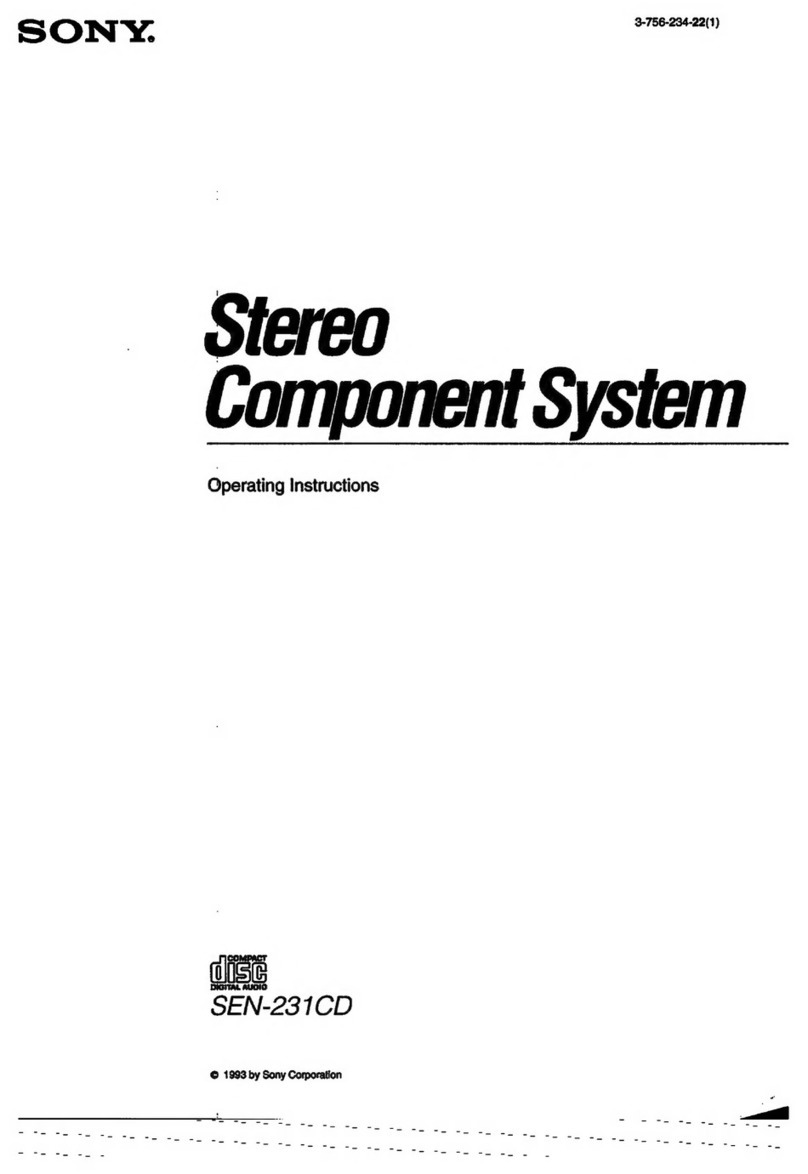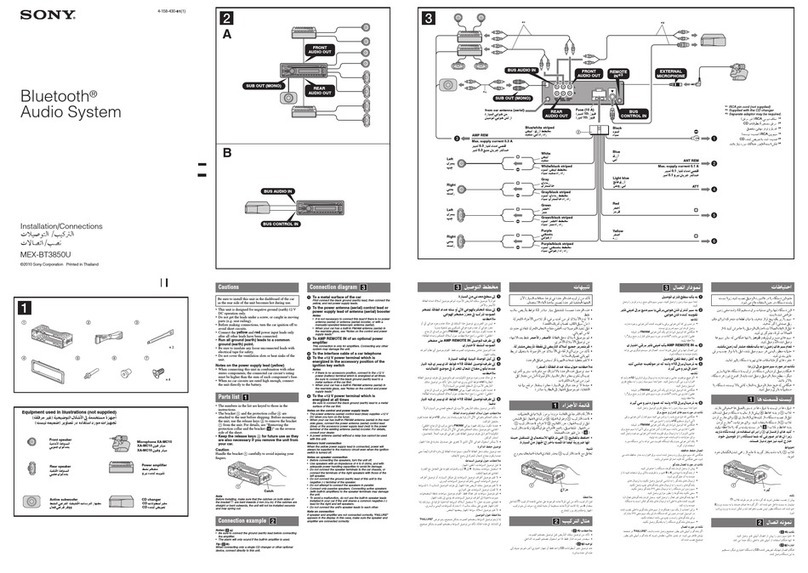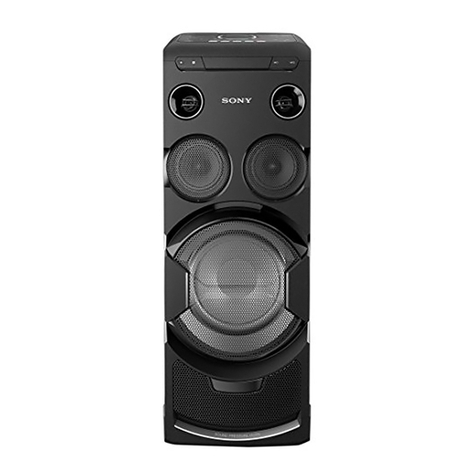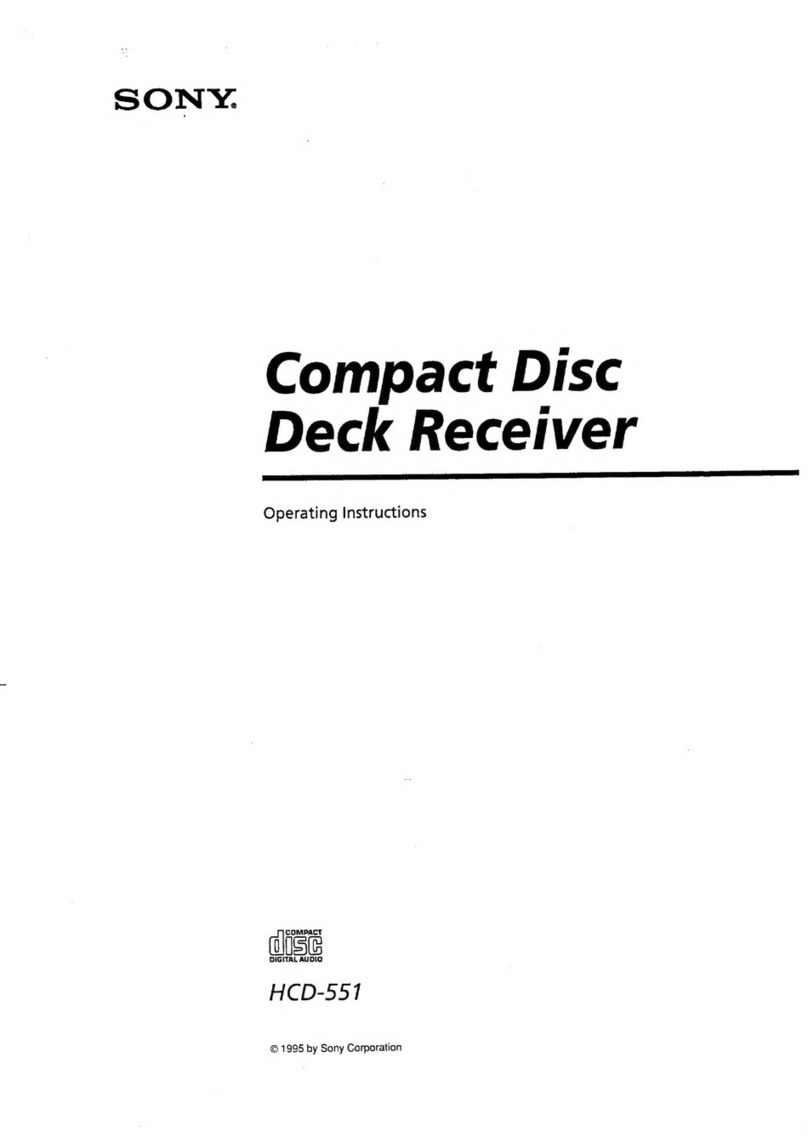— 4 —
TABLE OF CONTENTS
1. SERVICING NOTE .......................................................... 5
2. GENERAL .......................................................................... 6
3. DISASSEMBLY
3-1. Loading Panel ....................................................................... 8
3-2. Front Panel ........................................................................... 8
3-3. TC Mechanism Deck and Deco Board (Except US, CND) .. 9
3-4. HP/MIC Board, Display Board and TC SW Board .............. 9
3-5. Disc Tray ........................................................................... 10
4. SERVICE MODE ............................................................ 11
5. MECHANICAL ADJUSTMENTS ..........................13
6. ELECTRICAL ADJUSTMENTS ............................... 13
7. DIAGRAMS
7-1. Circuit Boards Location ...................................................... 19
7-2. Brock Diagrams
• Tuner Section (AEP, UK, German model)....................... 21
• Tuner Section (East European, CIS model) ..................... 23
• CD Section ....................................................................... 25
• Deck Section .................................................................... 27
• Main Section .................................................................... 29
• Power Section .................................................................. 31
7-3. Printed Wiring Board — CD Section —............................. 33
7-4. Schematic Diagram — CD Section — ............................... 35
7-5. Printed Wiring Board
—Tuner (AEP, UK, German model) Section —................. 38
7-6. Schematic Diagram
—Tuner (AEP, UK, German model) Section —................. 39
7-7. Schematic Diagram
—Tuner (East European, CIS model) Section — ............... 41
7-8. Printed Wiring Board
—Tuner (East European, CIS model) Section — ............... 43
7-9. Printed Wiring Board — Main Section —.......................... 44
7-10. Schematic Diagram — Main Section — .......................... 47
7-11. Schematic Diagram — Deck Section — .......................... 51
7-12. Printed Wiring Board — Deck Section — ....................... 55
7-13. Schematic Diagram — Panel Section — ......................... 58
7-14. Printed Wiring Board — Panel Section —....................... 61
7-15. Schematic Diagram — Power Section — ........................ 65
7-16. Printed Wiring Board — Power Section — ..................... 69
7-17. Schematic Diagram — CD Motor Section — .................. 72
7-18. Printed Wiring Board — CD Motor Section — ............... 73
7-19. IC Block Diagrams ........................................................... 75
7-20. IC Pin Functions ............................................................... 82
8. EXPLODED VIEWS
8-1. Case Section........................................................................ 91
8-2. Main Board Section ............................................................ 92
8-3. Panel Board Section ............................................................ 94
8-4. Front Panel Section ............................................................. 96
8-5. TC Mechanism Section 1 (TCM-220WR2)........................ 97
8-6. TC Mechanism Section 2 (TCM-220WR2)........................ 98
8-7. CD Mechanism Section 1 (CDM38L-5BD29AL) .............. 99
8-8. CD Mechanism Section 2 (CDM38L-5BD29AL) ............ 100
8-9. Base Unit Section (BU-5BD29AL) .................................. 101
9. ELECTRICAL PARTS LIST ...................................... 102
NOTES ON HANDLINGTHE OPTICAL PICK-UP BLOCK
OR BASE UNIT
The laser diode in the optical pick-up block may suffer electrostatic
break-down because of the potential difference generated by the
charged electrostatic load, etc. on clothing and the human body.
During repair, pay attention to electrostatic break-down and also
use the procedure in the printed matter which is included in the
repain parts.
The flexible board is easily damaged and should be handled with
care.
NOTES ON LASER DIODE EMISSION CHECK
The laser beam on this model is concentrated so as to be focused on
the disc reflective surface by the objective lens in the optical pick-
up block. Therefore, when checking the laser diode emission, ob-
serve from more than 30 cm away from the objective lens.
LASER DIODE AND FOCUS SEARCH OPERATION
CHECK
Carryout the “S curvecheck” in “CD section adjustment”and check
that the S curve waveform is output three times.
Parts No.
4-986-846-0
4-986-846-1
4-986-846-2
4-986-846-3
4-986-846-4
4-988-023-0
4-988-023-1
4-988-023-2
4-988-023-3
4-988-023-4
4-988-023-5
4-988-023-7
4-988-275-0
4-988-275-1
4-988-275-2
RX100AV: US model
RX100AV: CND model
RX100AV: AEP, UK, G model
RX100AV: EE, CIS model
D90AV : US model
GR10AV : E3, IA model
GR10AV : E2 model
GR10AV : SP model
GR10AV : JE model
GR10AV : HK model
GR10AV : AUS model
GR10AV : TH model
RX100AV: AEP model
GR10AV : EA model
GR10AV : MY model
PARTS No. MODEL PRODUCT
COUNTRY
INDONESIA
INDONESIA
INDONESIA
INDONESIA
INDONESIA
INDONESIA
INDONESIA
INDONESIA
INDONESIA
INDONESIA
INDONESIA
THAILAND
MALAYSIA
MALAYSIA
MALAYSIA
MODEL IDENTIFICATION
— BACK PANEL —
• Abbreviation
CND:Canadian model
G :German model
EE :East European model
EA :Saudi Arabia model
HK :Hong Kong model
SP :Singapore model
JE :Tourist model
MY :Malaysia model
AUS:Australian model
TH :Thailand model
IA :Indonesian model
E2 :WithoutSWtuner E model
E3 :With SW tuner E model
